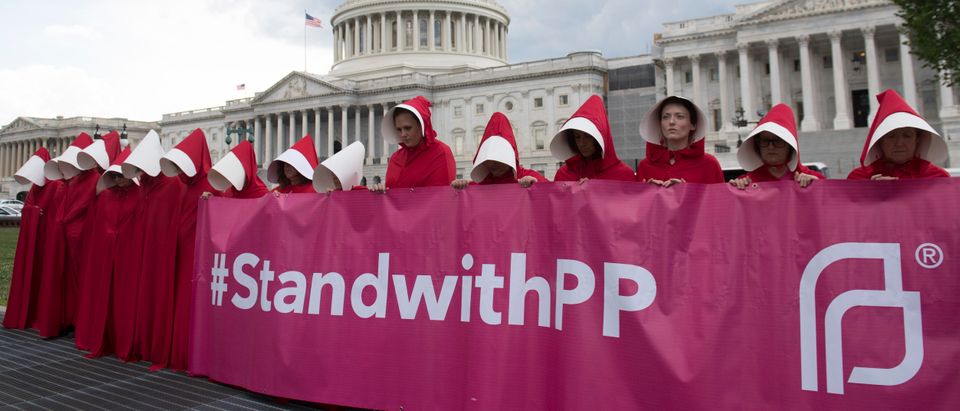The recent “pink wave” swept into Congress an unprecedented number of women, many of whom put women’s health high on their list of priorities.
There’s no question that much can — and should — be done to improve women’s health. However, there’s also no question that a legislative focus on women’s health continues to ignore a far larger problem: the very real crisis in men’s health.
The facts are simple, yet stark:
- On average, men in the U.S. live shorter (by five years), sicker lives than women, dying at younger ages and in greater numbers from nine of the top 10 causes of death.
- Men are 40 percent more likely than women to die of cardiovascular disease, cancer, and diabetes, and twice as likely to die of liver disease
- Men account for 67 percent of opiate overdose deaths, 75 percent of suicides, and 90 percent of workplace injuries and fatalities
- Men are much more likely than women to be unemployed and less likely to have insurance.
- Boys and men engage more than females in over 30 unhealthy behaviors (alcohol use, tobacco use, overeating, etc.) that increase their risk for poor health outcomes. They often ignore their symptoms and delay getting medical attention until it’s an emergency — or too late.
- Many men and boys — particularly those with low incomes — are systematically excluded from getting care. The Affordable Care Act, for example, covers free annual “well-woman” physical exams and screenings for STDs and mental health for women and girls, but NOT for men and boys. As a result, men and boys often don’t receive preventive care, and potentially life-threatening conditions don’t get diagnosed early, when they’re far easier to treat and/or cure.
Despite the overwhelming evidence that American males are far worse off than females, talk of women’s health “crisis” persists. And there’s a lot of money behind that talk.
In the federal government alone, there are at least five offices of women’s health: at the Centers for Disease Control and Prevention (CDC), Food and Drug Administration (FDA), Department of Health and Human Services (HHS), Substance Abuse and Mental Health Services Administration (SAMSHA), and the Health Resources and Services Administration (HRSA).
The combined annual budgets of these offices is in the tens of millions of dollars. In addition, the Office of Research for Women’s Health within the National Institutes of Health (NIH) — one of several research agencies focusing exclusively on women’s health — has a $5 billion annual budget.
Today, there are exactly zero offices of men’s health anywhere in the federal government, zero offices researching men’s health, and a corresponding combined budget of exactly zero dollars.
Nowhere, however, is this “male-blindness” more glaring than at the American Public Health Association (AHPA), an international organization with 25,000 members that claims to champion “the health of all people and all communities” and whose mission is to “achieve equity in health status.”
Sounds great. But the closing general session at APHA’s annual meeting earlier this month was titled, “Dying too Soon: A Look at Women’s Health.” The description reads, in part: “Women continue to die in unacceptable rates from preventable diseases. This session will explore the issues around premature death in American women throughout the lifespan.”
Coming from an organization that supposedly fights for equity, it’s hard to see that as anything but an insult to men.
Whenever I talk about the crisis in men’s health and the need to create an Office of Men’s Health, I hear from skeptics who accuse me of wanting to “take resources away from women’s health.” Nothing could be further from the truth. Healthier men make healthier families, and healthier families make a healthier — and more prosperous — country for all of us.
On the other hand, while women’s health gets plenty of well-deserved attention — and money — ignoring the men’s health crisis, is incredibly costly. Federal and state governments lose tens of billions in tax revenues (because men are either dead or too sick to earn taxable income), and pay out billions more to survivors (who wouldn’t be survivors if their husbands or fathers were still alive). And the overall economy loses still more billions in lost productivity.
In addition, Andrew Yarrow, author of “Man Out,” documents that male suicides cost the US at least $70 billion in 2015, male opioid abuse costs another $50 billion, and men’s alcohol-related problems cost more than $150 billion in 2010.
Before the end of this year, a bipartisan coalition in Congress will introduce a bill to create the first-ever federal Office of Men’s Health.
I urge you to contact your representative and express your support. And if you’re a member of APHA, I urge you to contact their governing body to express your outrage at their deliberate — and divisive — omission of the very real crisis in men’s health.
Armin Brott is the author of 10 bestselling books, including “The Expectant Father” and “The Military Father.” He’s also a syndicated radio host and an advisor to Men’s Health Network.
The views and opinions expressed in this commentary are those of the author and do not reflect the official position of The Daily Caller.


